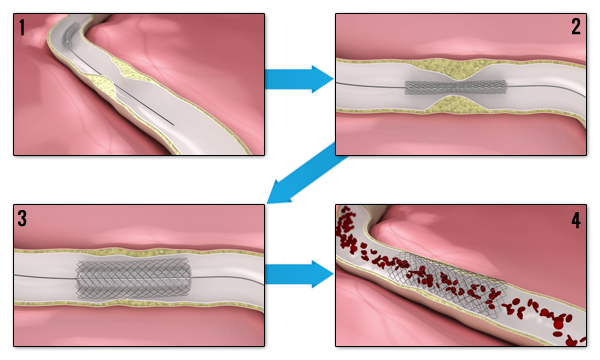Angioplasty and Stenting
Home › Treatment › Operations › Angioplasty/Stenting

- With x-ray and dye guidance, a cardiologist can advance a very small (14/1000 inch) guide wire through an artery until the tip is beyond the plaque.
- An angioplasty balloon catheter is moved over the guide wire until the balloon is within the narrowed segment. The stent is introduced into the blood vessel on the angioplasty balloon catheter. A stent is a metal slotted tube that prevents recoil of an artery after an angioplasty procedure.
- Once in position, the balloon is inflated. The inflation of the balloon causes the stent to expand, pressing it against the vessel wall. It is common to experience some discomfort when the balloon is inflated, because blood flow through the artery is temporarily decreased or blocked. This should decrease when the balloon is deflated. Tell your doctor if you do experience pain.
- When your doctor is satisfied that the plaque has been compressed and the artery has been opened sufficiently, the balloon is deflated and withdrawn. The stent stays in place permanently, holding the vessel open and improving blood flow. By taking more x-ray pictures of the artery, your physician can see how much the blood flow has improved. Within two to four weeks after the procedure, the body’s own cells should completely coat the stent. Drug coatings on stents can improve the likelihood of a long-term durable result.


 Español
Español












